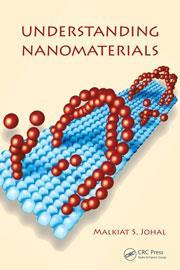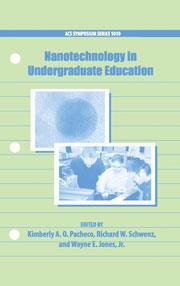Understanding Nanomaterials and Nanotechnology in Undergraduate Education
Understanding nanomaterials
Malkiat Johal
CRC Press
2011 | 327pp | ?38.99 (PB)
ISBN 9781420073102
Reviewed by David Smith

There is no doubt that nanoscience is increasingly underpinning new developments in modern technology. As the concepts of nanotechnology, which involve working at length scales of 1-100 nm, become increasingly dominant, it becomes ever more important that we educate our undergraduate students in the fundamentals of the subject. These two books provide different kinds of resources for educators interested in incorporating nanoscience into their undergraduate chemistry programs.
Understanding nanomaterials offers a useful overview of nanomaterials, which could easily be adapted into an undergraduate taught programme at a final year level, or make a good foundation course for graduate students. It focuses primarily on a physical chemistry approach to the subject, considering intermolecular interactions and self-assembly, processes on surfaces, characterisation methods, and some types and uses of nanomaterials.
I suspect that many physical chemists would enjoy building their teaching around the well-explained material in this book, and that students would find it clear and informative. In particular the end of chapter questions are valuable. This book clearly begins to demonstrate how nanochemistry can be taught as a coherent discipline, albeit without some of the synthetic and molecular design aspects of the subject.
Nanotechnology in undergraduate education
Kimberly Pacheo et al (eds)
OUP USA
2011 | 352pp | ?ISBN 9780841269682
Reviewed by David Smith

Nanotechnology in undergraduate education is an edited collection of nanotechnology-based activities which have been used in US universities. In essence, the book is a collection of Journal of Chemical Education-type articles. Some of the articles explore curriculum design, while others offer experimental, hands-on approaches to the topic.
As ever with such collections, the articles can be a bit hit-or-miss, and it is in no way comprehensive of nanoscience, but some of these activities will be very useful to the reader interested in incorporating specific material in their degree programmes. For example, experiments to synthesise metallic nanoparticles which are appropriate for first year students could be incorporated into any course, and should enthuse and engage chemistry students with the subject. Clearly nanochemistry is coming -it’s about time more of it got into undergraduate education.
RSC members can purchase Nanotechnology in undergraduate education direct from the publishers for a 25% discount on the RRP. See the member benefits link on this page.












No comments yet